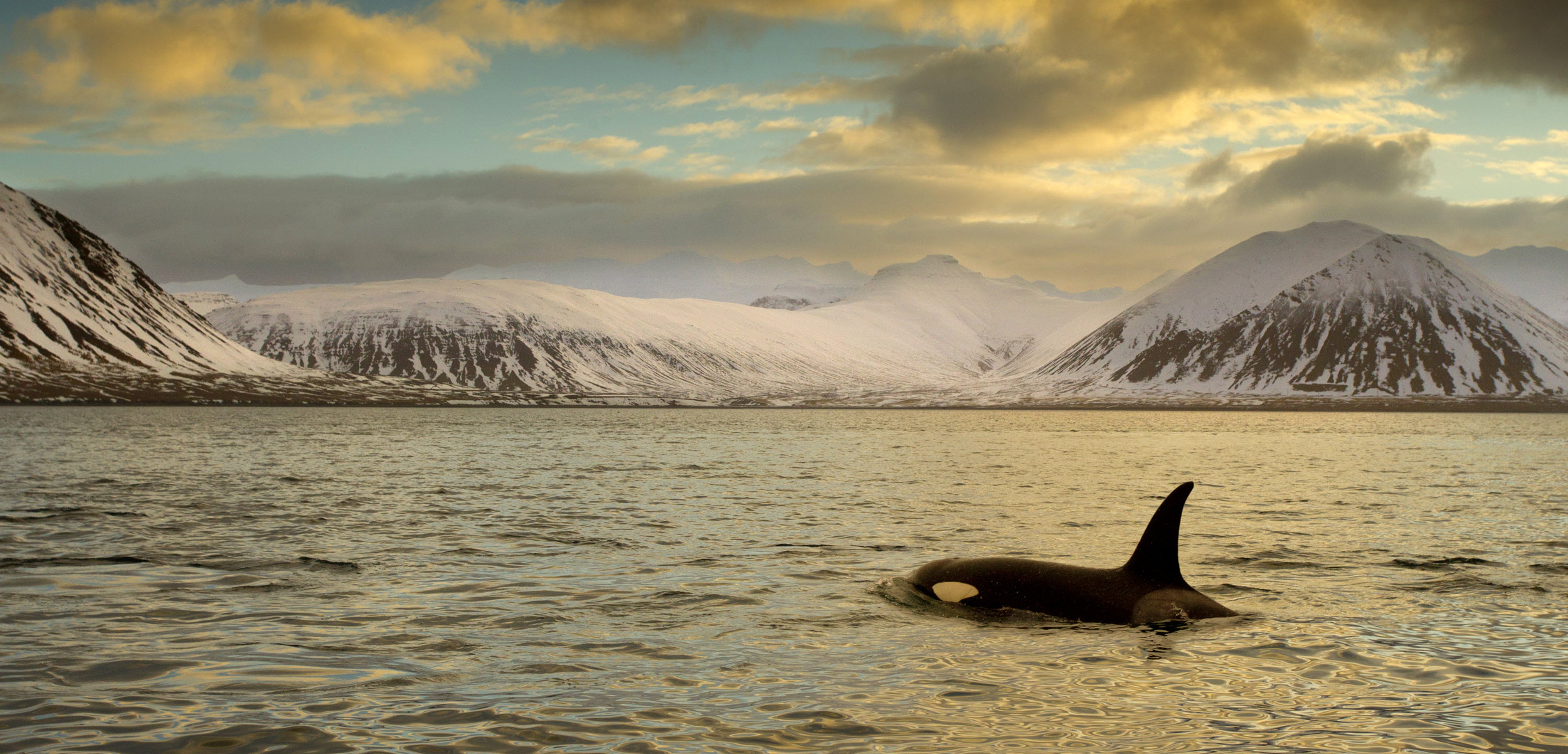One Ocean, Many Killer Whale Cultures
Iceland’s killer whale society is more fluid than that of their northeast Pacific peers.
Article body copy
In the cold, dark waters off the southern tip of Iceland, killer whales work together to corral fish into tight balls, taking turns to stun and devour them. Groups of up to 200 whales will enter the fray, feeding on these concentrated schools of herring. A few months later, some of these same whales will be 1,000 kilometers away, working in small groups to hunt seals along the Scottish coast.
The observation that Icelandic killer whales are fluid in both their choice of prey and their group size surprised researchers studying the whales’ social structure. This behavior, discovered by Sara Tavares of Scotland’s University of St Andrews, was unlike that of the intensively studied killer whales of the northeast Pacific, which have more rigid and hierarchical relationships. There, resident killer whales feed on salmon, stick to relatively small home ranges, and live in stable kinship groups led by a matriarch. In contrast, northeast Pacific transient killer whales are marine mammal specialists that live in small groups and travel over wide ranges. While transients also form family groups, it is not uncommon for individuals to form temporary associations with other transient killer whales. Residents and transients, however, rarely interact.
The findings of Tavares’s team show a much less stable association between Icelandic killer whales. They found that groups frequently break apart and come back together, and that it’s not just the prey type, but how the prey act that may be driving their relationships.
Tavares and her team have tracked Icelandic killer whales from boats, photographing the animals as they fed on spawning herring. The researchers amassed nearly 30,000 photographs. From these they were able to identify 314 individuals, and measured the associations of 198 whales, calculating who went where and who spent time with whom.
“One of the most interesting things that we noticed was that individuals with different movement patterns still associated together,” says Tavares. Some whales stay in Iceland year-round, for instance, while some only show up in the summer or winter. Others will travel hundreds of kilometers away to feed on mammals. But on the main herring feeding grounds in Iceland, they will all interact, sometimes in mega pods of dozens, or even a few hundred animals.
So why are Icelandic killer whale societies so much more flexible than those of their northeast Pacific counterparts? Tavares suggests it is because of differences in how their prey behave.
Icelandic whales predominately eat herring, while Pacific resident killer whales eat salmon. Herring is a small schooling fish and their schools constantly change size. Salmon, on the other hand, spawn in seasonal runs. Icelandic whales, then, must constantly change the size of their group to adapt to herding herring, while resident killer whales of the northeast Pacific move as a unit to intercept runs of salmon. (And when killer whales in all oceans hunt marine mammals, they travel in small groups and rely on stealth for success.) These differences in hunting strategies, Tavares says, are likely intertwined with the whales’ different social orders.
“It’s probably very necessary and advantageous to have a fluid society—individuals are always joining and separating,” says Tavares.
This study illustrates the flexibility and diversity of killer whales, says Andy Foote, an evolutionary ecologist at Bangor University in Wales who was not involved in the study.
This flexibility means that killer whales can adapt to different ecological challenges, which explains their ability to colonize new niches and how they have radiated across the globe, he says. It also suggests that whales’ social structure may be a product of social learning, rather than being innate and fixed, says Foote.
“I think this is a good reminder for us scientists to always keep an open mind, and to not assume that all killer whales will behave or conform to the ecotype models of the North Pacific.”

